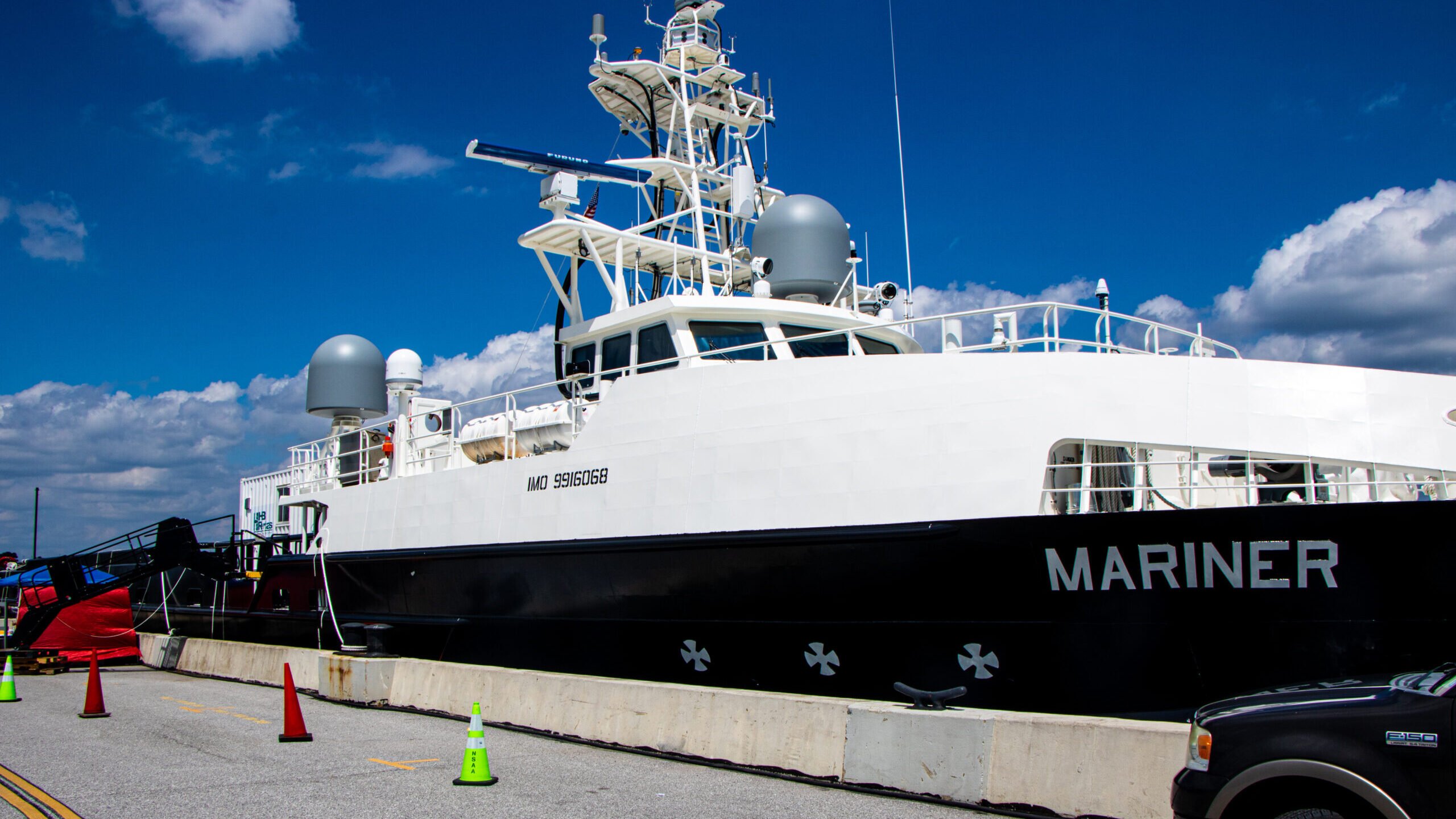
The USV Mariner, a US Navy research and development vessel, is docked at the United States Naval Academy where it will be christened on Aug. 23, 2022. (Justin Katz/Breaking Defense)
WASHINGTON — The US Navy is eyeing an expansion of a key marketplace contract to study and develop new payloads, sensors and other technologies for its future unmanned surface vehicle fleet, presenting industry with another opportunity to gain direct access into the service’s research and development enterprise.
In a public notice published last week, the service said it may re-open the window, first opened in February 2020, for companies interested in equipping its USVs with different sub-system technologies. Back in 2020, 40 vendors were selected for an indefinite-delivery, indefinite-quantity, multiple award contract. Also dubbed IDIQ-MACs, the contracts allow the government to establish insulated marketplaces by hand picking a group of companies all capable of a similar set of tasks, but also have unique rules for when companies can enter. The chosen vendors then compete against one another directly for work associated with that contract.
“Orders to date have included various design and integration studies, combat systems ship integration activities, and payload development and integration efforts,” according to the Navy’s notice. “The Navy is currently pursuing various unmanned sustainment support efforts as well, and planning is ongoing for other unmanned technology development efforts.”
In addition to various mission payloads, the contract includes technology development efforts focused on mission support systems such as launch and recovery tools, autonomy and vehicle control systems, ashore and host platform elements as well as logistics and sustainment. Responses are due by Dec. 19.
The new request for information comes toward the end of a year where the Navy has made strides in advancing the foundations of its future unmanned fleet, ranging from kicking off an exercise in the Middle East to commissioning one of its premiere research and development vessels, dubbed Mariner, and preparing the autonomous software needed to run these vessels.
The efforts collectively reflect the service’s strategy for convincing an ever-skeptical Congress to embrace unmanned technology through showing, rather than telling.
Major trends and takeaways from the Defense Department’s Unfunded Priority Lists
Mark Cancian and Chris Park of CSIS break down what is in this year’s unfunded priority lists and what they say about the state of the US military.


























